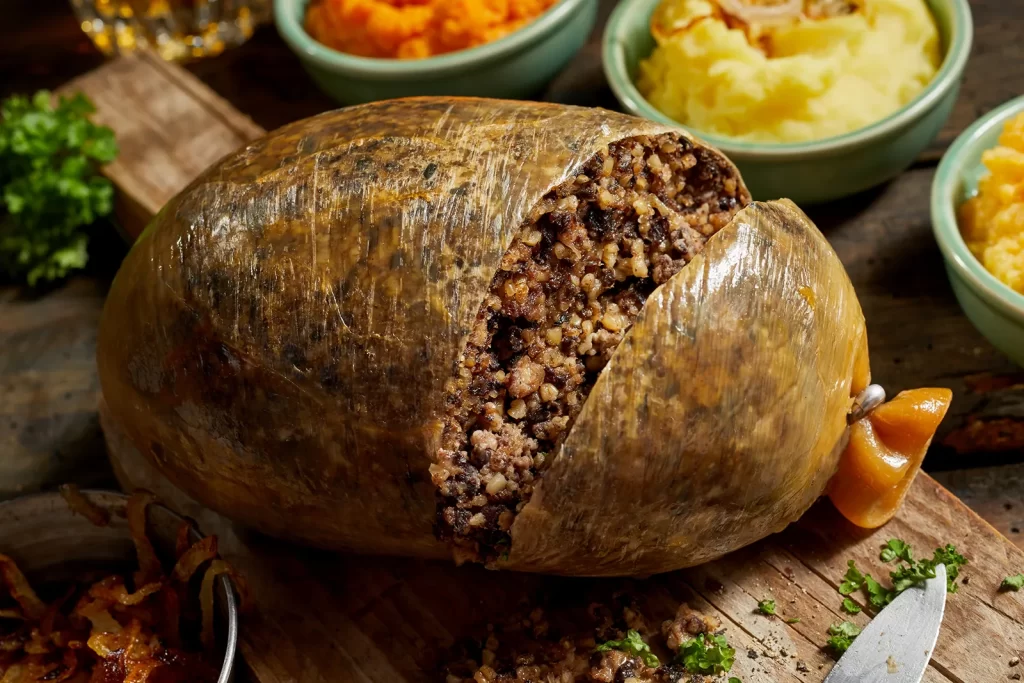Traditional Haggis is Scotland’s most famous dish, known for its rich flavors and cultural significance. This savory pudding is made from sheep’s pluck (heart, liver, and lungs), suet, onions, oatmeal, and spices, all encased in a natural casing. Although it might sound unusual, haggis has a distinct, hearty taste and a texture that makes it an essential part of Scottish cuisine.
Origin of Traditional Haggis
The history of haggis dates back centuries, with its origins believed to be rooted in Scotland’s farming and hunting communities. The dish was traditionally made as a way to utilize every part of the animal, ensuring nothing went to waste. Haggis became a staple in Scottish households due to its affordability, nourishment, and ability to feed large families. Today, it is most famously associated with Burns Night, an annual celebration on January 25th honoring the Scottish poet Robert Burns, who wrote the poem Address to a Haggis in its praise.
Why Is Traditional Haggis Banned in the U.S. and What Makes It So Controversial?
Haggis, Scotland’s national dish, is made from sheep’s pluck (heart, liver, and lungs) mixed with oatmeal, suet, and spices. The U.S. banned traditional haggis in 1971 due to FDA regulations prohibiting sheep lung consumption in food, citing health concerns over lung fluids. Despite this, haggis remains a beloved dish in Scotland, especially on Burns Night, honoring poet Robert Burns. While alternatives exist in the U.S., authentic haggis remains unavailable due to this restriction.
ALSO READ: Roasted Potatoes Recipe
